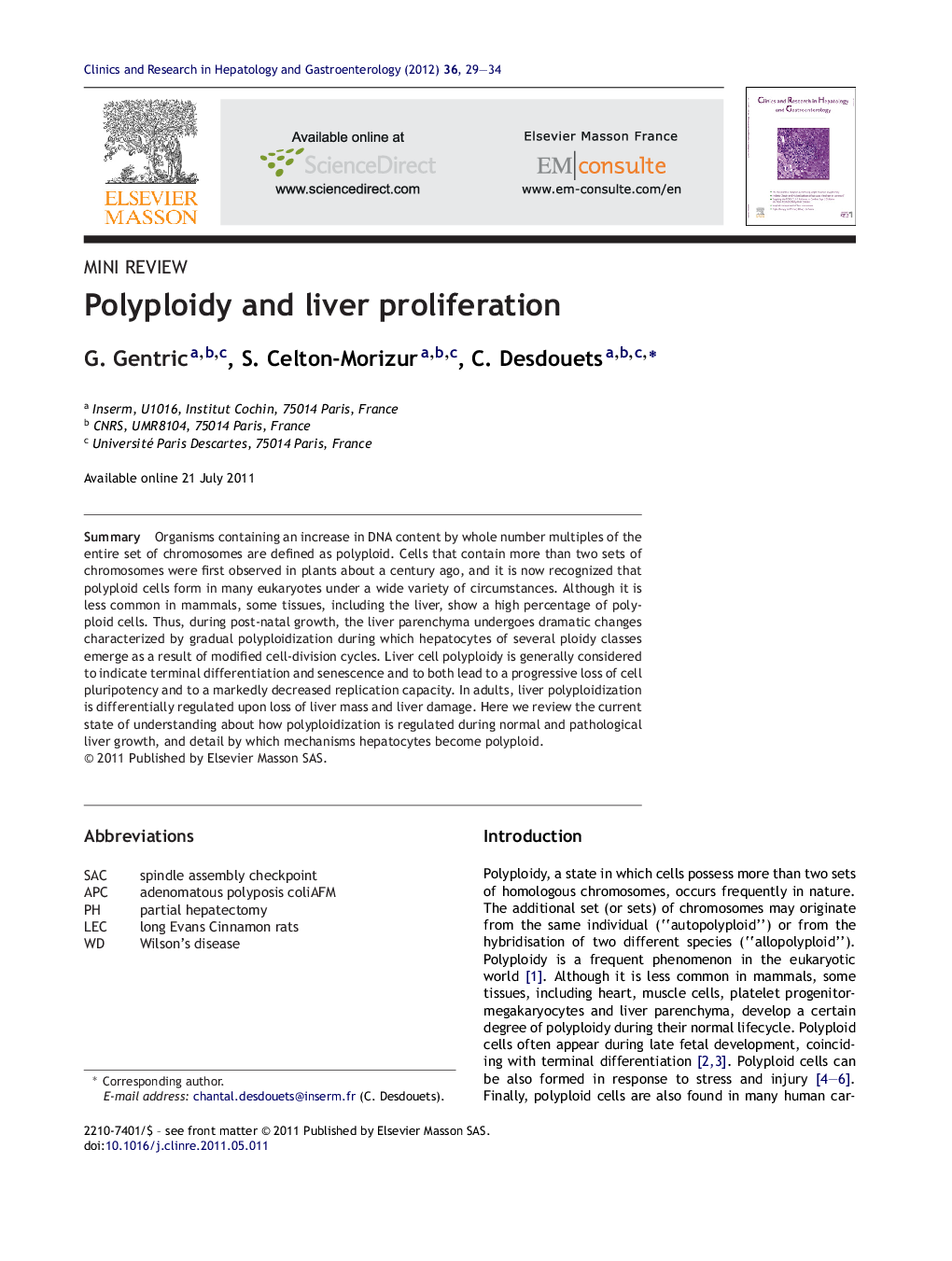| Article ID | Journal | Published Year | Pages | File Type |
|---|---|---|---|---|
| 3286790 | Clinics and Research in Hepatology and Gastroenterology | 2012 | 6 Pages |
SummaryOrganisms containing an increase in DNA content by whole number multiples of the entire set of chromosomes are defined as polyploid. Cells that contain more than two sets of chromosomes were first observed in plants about a century ago, and it is now recognized that polyploid cells form in many eukaryotes under a wide variety of circumstances. Although it is less common in mammals, some tissues, including the liver, show a high percentage of polyploid cells. Thus, during post-natal growth, the liver parenchyma undergoes dramatic changes characterized by gradual polyploidization during which hepatocytes of several ploidy classes emerge as a result of modified cell-division cycles. Liver cell polyploidy is generally considered to indicate terminal differentiation and senescence and to both lead to a progressive loss of cell pluripotency and to a markedly decreased replication capacity. In adults, liver polyploidization is differentially regulated upon loss of liver mass and liver damage. Here we review the current state of understanding about how polyploidization is regulated during normal and pathological liver growth, and detail by which mechanisms hepatocytes become polyploid.
